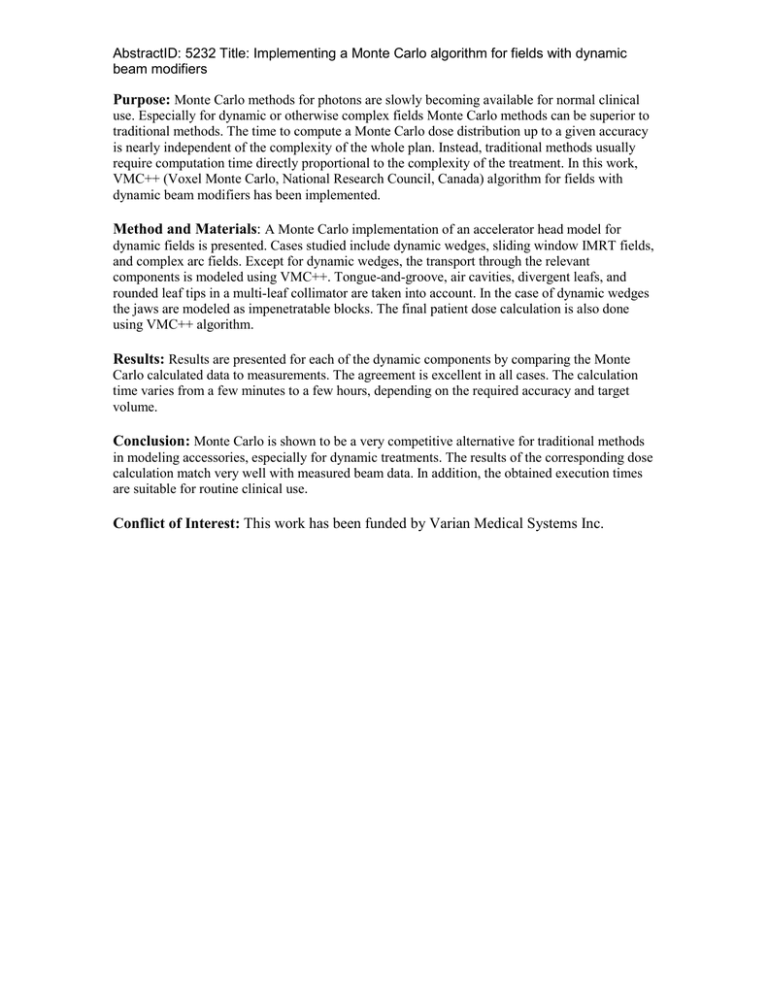Purpose:
advertisement

AbstractID: 5232 Title: Implementing a Monte Carlo algorithm for fields with dynamic beam modifiers Purpose: Monte Carlo methods for photons are slowly becoming available for normal clinical use. Especially for dynamic or otherwise complex fields Monte Carlo methods can be superior to traditional methods. The time to compute a Monte Carlo dose distribution up to a given accuracy is nearly independent of the complexity of the whole plan. Instead, traditional methods usually require computation time directly proportional to the complexity of the treatment. In this work, VMC++ (Voxel Monte Carlo, National Research Council, Canada) algorithm for fields with dynamic beam modifiers has been implemented. Method and Materials: A Monte Carlo implementation of an accelerator head model for dynamic fields is presented. Cases studied include dynamic wedges, sliding window IMRT fields, and complex arc fields. Except for dynamic wedges, the transport through the relevant components is modeled using VMC++. Tongue-and-groove, air cavities, divergent leafs, and rounded leaf tips in a multi-leaf collimator are taken into account. In the case of dynamic wedges the jaws are modeled as impenetratable blocks. The final patient dose calculation is also done using VMC++ algorithm. Results: Results are presented for each of the dynamic components by comparing the Monte Carlo calculated data to measurements. The agreement is excellent in all cases. The calculation time varies from a few minutes to a few hours, depending on the required accuracy and target volume. Conclusion: Monte Carlo is shown to be a very competitive alternative for traditional methods in modeling accessories, especially for dynamic treatments. The results of the corresponding dose calculation match very well with measured beam data. In addition, the obtained execution times are suitable for routine clinical use. Conflict of Interest: This work has been funded by Varian Medical Systems Inc.


